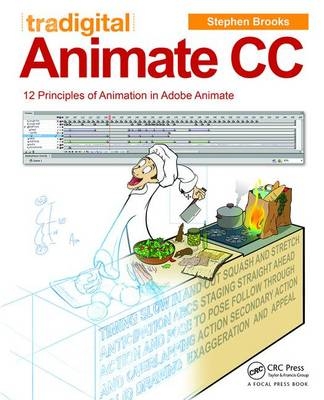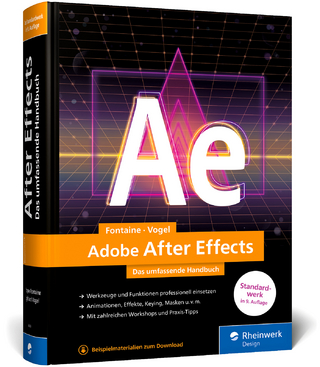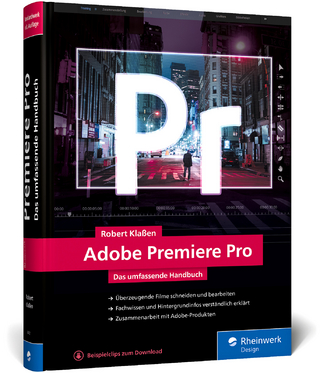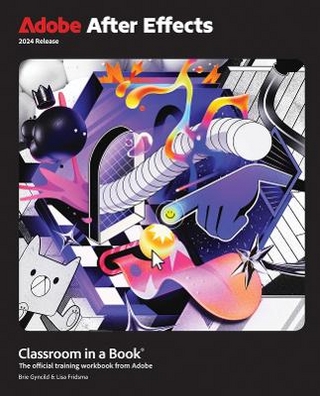
Tradigital Animate CC
CRC Press (Verlag)
978-1-138-01292-9 (ISBN)
Tradigital Flash: 12 Principles of Animation in Adobe Flash brings the essentials of traditional animation and Adobe Flash together. The early masters of animationcreated a list of 12 principles which are important for anyone who wants to create interesting and believable animation. Digital animation continues to make incredible technological advancements that give animators the capability to produce visually stunning work. New technology, however, also has a tendency to create an environment where animators are so focused on adapting to the new workflow that they tend to dismiss these fundamental animation principles… which often leads to poor and lifeless character animation. Tradigital Flash helps you focus on these principles while using the program’s wide array of features to create believable animation, consistently.
Tradigital Flash joins three other Tradigital books covering Maya, Blender, and 3ds Max. This new volume in the series approaches the topic in a different way, giving readers both a practical look at the software, and providing a theoretical understanding of the genre.
Learn a new principle in each chapter, the Flash tools most related to it and how to put it all together.
A plethora of examples demonstrate the good methods which animators should use in Flash, how to avoid the bad ones and ways to create a workflow that works for you.
An easy-to-follow approach with examples throughout the book that build on each other, showing how the principles act together.
A companion website www.rubberonion.com/tradigital-animate features more examples, downloadable FLA resource files, video tutorials.
Key Features
Every chapter teaches you a principle, shows you the corresponding tool or tools, and shows you how to all put it together.
A wide array of examples demonstrate the good, bad, and sometimes ugly procedures an animator can practice with Flash.
A follow-along approach, where examples throughout the book build on each other, showing how the principles act together.
A companion website features more examples, downloadable swf resource files, video tutorials.
Stephen Brooks is the creator of Rubber Onion Animation, a freelance and virtual studio operation. With ads, cartoon shorts and his character work on games such as Moshi Monsters paying the bills, Stephen has been active in creating his own animated shorts, podcast and tutorial series. With a focus on classical, hand-drawn animation, Stephen has been working in Animate CC (formerly called Flash) for over ten years, bridging the gap between the traditional and digital worlds.
Chapter 1: Introduction, the Principles & the Program
Chapter 2: Timing
Chapter 3: Slow In & Slow Out
Chapter 4: Squash & Stretch
Chapter 5: Anticipation
Cahpter 6: Arcs
Chapter 7: Staging
Chapter 8: Straight Ahead & Pose to Pose
Chapter 9: Follow Through & Overlapping Action
Chapter 10: Secondary Action
Chapter 11: Solid Drawing
Chapter 12: Exaggeration
Chapter 13: Appeal
Chapter 14: Putting It All Together
Chapter 15: Wrapping it Up
Appendix A: Advanced Techniques
| Zusatzinfo | 746 Halftones, color |
|---|---|
| Verlagsort | London |
| Sprache | englisch |
| Maße | 191 x 235 mm |
| Gewicht | 970 g |
| Themenwelt | Kunst / Musik / Theater ► Film / TV |
| Kunst / Musik / Theater ► Theater / Ballett | |
| Informatik ► Grafik / Design ► Film- / Video-Bearbeitung | |
| Mathematik / Informatik ► Informatik ► Web / Internet | |
| ISBN-10 | 1-138-01292-0 / 1138012920 |
| ISBN-13 | 978-1-138-01292-9 / 9781138012929 |
| Zustand | Neuware |
| Haben Sie eine Frage zum Produkt? |
aus dem Bereich


